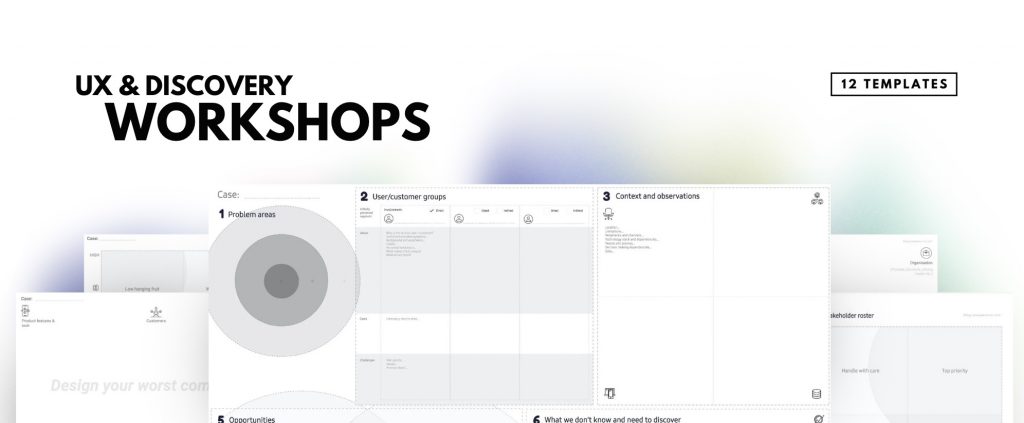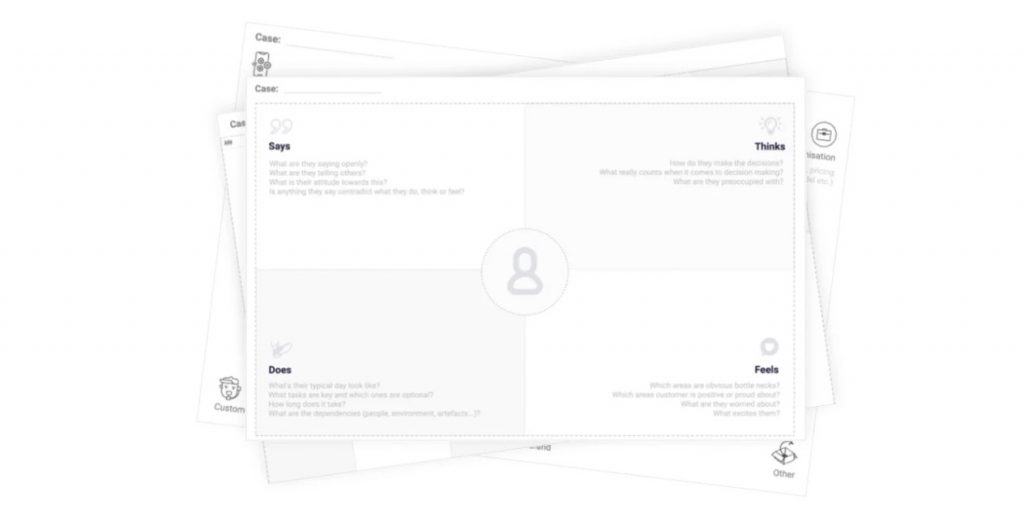
If you’ve ever struggled to keep the room engaged, provide enough gravitas, structure, and guidance – you need your own set of UX workshop templates.
I created these templates to provide a basic framework for designers of all levels to facilitate workshops successfully: guide the audience to an outcome, keep them focussed on the right issues (opportunities, journeys, empathy, etc.) and surface valuable insights and themes. More often than not, I design my own sessions (discovery and ideation workshops in particular) each time, but these templates provide a good starting point.
Watch my video for a quick run-through of these templates and how to use them, or keep reading for more info:
A run-through of all the UX workshop templates and how I use them

Download these 12 ready-to-use templates
You’ll receive access to 12 UX, design thinking and discovery workshop templates I use in almost every project.
All templates come as .JPG at reasonable dimensions to be printed as wide-format posters: A3, A2, A1, A0… you get the drill. No access to a printer? You can also always draw these out on a whiteboard for a workshop.
Additionally, you’ll get a twice-monthly Experience Designed newsletter.
📌 Feel free to hack, update and otherwise change these UX workshop templates as you see fit. Attribution is appreciated but not necessary.
Recommended further resources
- My 4-part series to help you get started with experience mapping and workshop facilitation.
- How to be more confident in UX: presence, communication and stakeholder management
- UX portfolio review: using ethnographic UX research methods to deepen understanding.